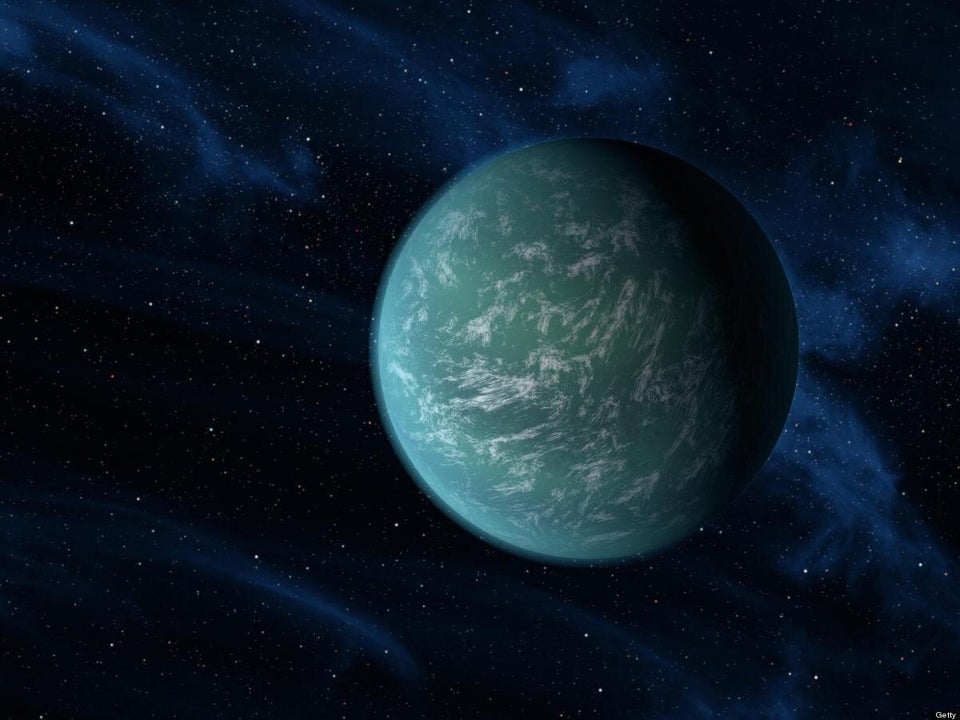It’s been a big week for Michelle Kunimoto. Not only did she graduate from the University of British Columbia with a degree in physics and astronomy, she was also recognized by William Shatner for her planetary discoveries.
During her undergrad, the 22-year-old uncovered four new planets using data from NASA’s Kepler telescope.
For months, Kunimoto analyzed 400 data samples of “light-curves” — measurements of the brightness of stars over time — that had previously been overlooked. She was searching for evidence of a planet passing in front of a star, similar to the recent Mercury transit.
“When it passes in front of a star, there’s a subtle dip in the avbrightness because it blocks out some of that star’s light,” Kunimoto said in an interview with The Huffington Post Canada. “If it happens, say, every 30 days, you can make a good guess that it is actually a planet orbiting the star every 30 days.”

Michelle Kunimoto's discoveries are compared to planets in our solar system. (Photo: Michelle Kunimoto, Jaymie Matthews/UBC)
By examining these light-curves, she discovered four exoplanets, which are planets that exist outside of our solar system. Two of them are roughly the same size as the Earth, and one is similar to the size of Mercury.
The fourth planet is the one Kunimoto is most excited about. It’s slightly larger than Neptune, and is about 3,200 light years away. It exists in the “habitable zone,” which is a range of distances from a star where a planet can have liquid water on its surface. The temperature on the surface has to be between the freezing and boiling points of water.
She said that the planet is probably too gaseous to support life or have liquid water, but if there are moons orbiting it that are large enough to support an atmosphere, they may be able to support life.
“The most common reference is Pandora in the movie Avatar,” Kunimoto said. “It wasn’t actually a planet, but a moon around a giant planet.”
’I wanted to become a Trekkie’
In addition to the astronomy unit she did in Grade 9 science, her interest in exoplanets was sparked when her dad introduced her to the original Star Trek series.
“I wanted to become a Trekkie,” she said.
She also inherited a telescope — one of her most prized possessions.
Kunimoto’s discoveries are still in the “planet candidate” stage, meaning that they have yet to be officially confirmed as planets. She said that it’s very easy to mistake the signals, so she had to be careful and run a lot of tests. She’s confident that her Neptune doppelganger will be approved.
Although the work could be tedious at times, the payoff was worth it.
“You really feel like you’re on the road to some kind of discovery, and that’s exciting,” Kunimoto said.

Michelle Kunimoto met William Shatner during an event at UBC.
Discovering planets has other perks as well. On Saturday, Kunimoto met William Shatner of the original “Star Trek” series when he gave her a shoutout during a talk at UBC.
He mentioned her work while answering audience questions, saying that he had read an article about her discovery.
“That was completely unexpected,” Kunimoto said. “It’s not every day that Captain Kirk gives a shout out to your research in front of a full audience.”
This summer, Kunimoto is moving to Montreal to work on another exoplanet research project. She’ll be heading back to UBC in September to start working on her master's degree in astronomy.
This isn’t the first time that someone from UBC has discovered a new planet. In 2014, a group of astronomers, including one from the school, discovered the existence of a “Super-Earth.”
Also on HuffPost:
